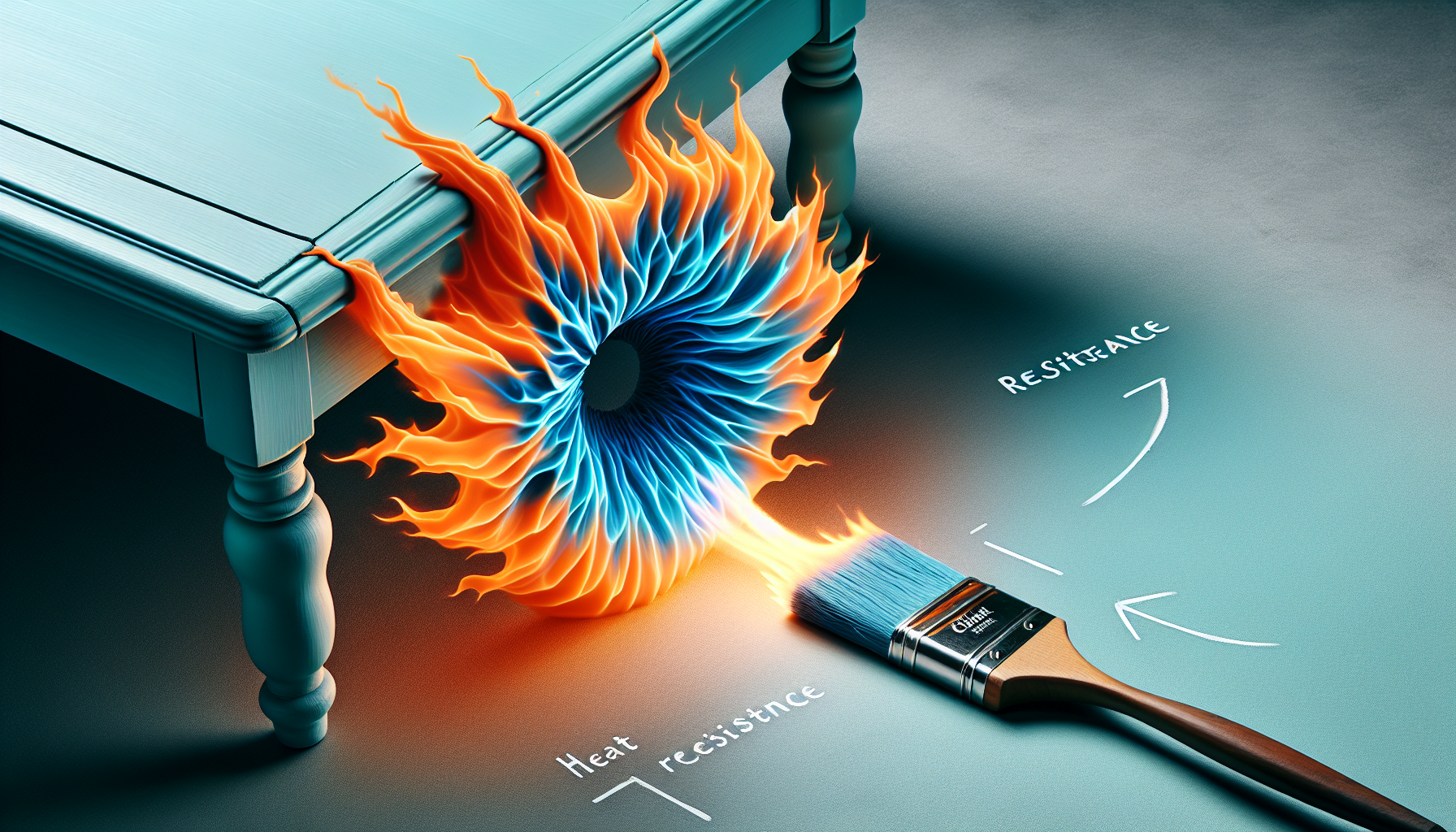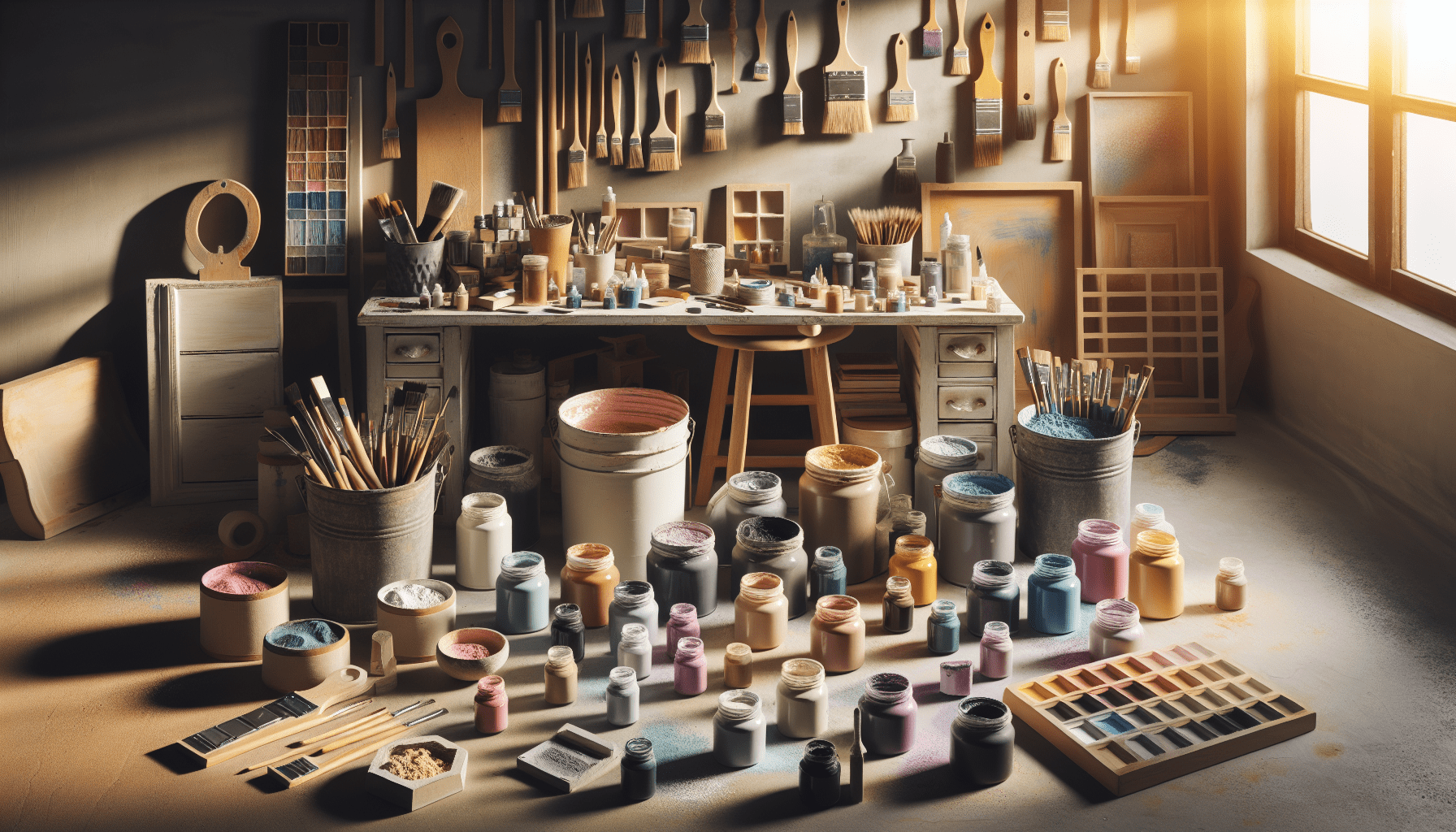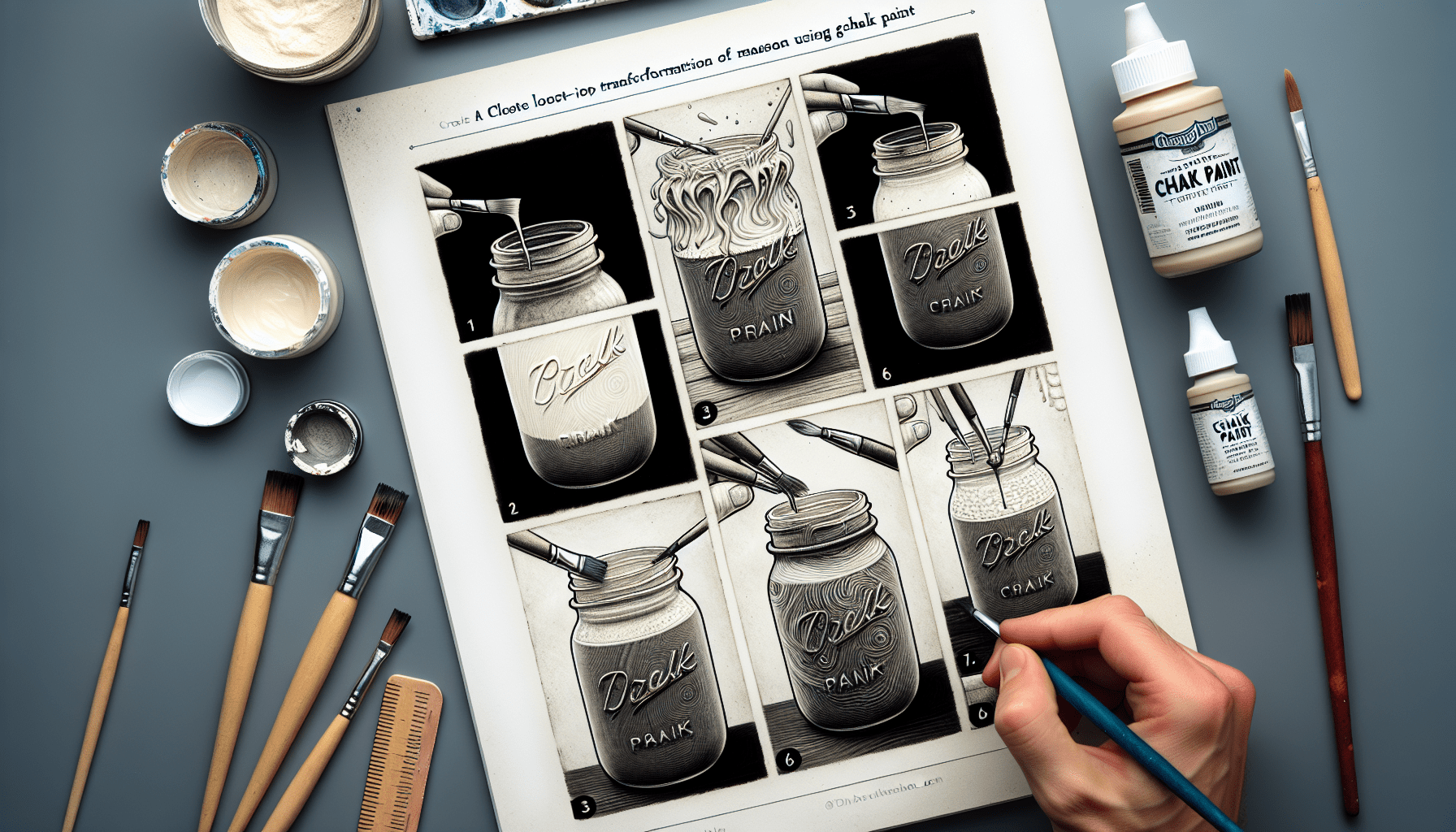Chalk paint has gained popularity in recent years for its ability to transform furniture and other surfaces with a unique, matte finish. However, before investing time and effort into a chalk paint project, it is crucial to determine whether this type of paint is heat resistant. This article explores the question of whether chalk paint can withstand high temperatures, providing valuable insights for the curious DIY enthusiast or homeowner looking to add a touch of charm to their living space.
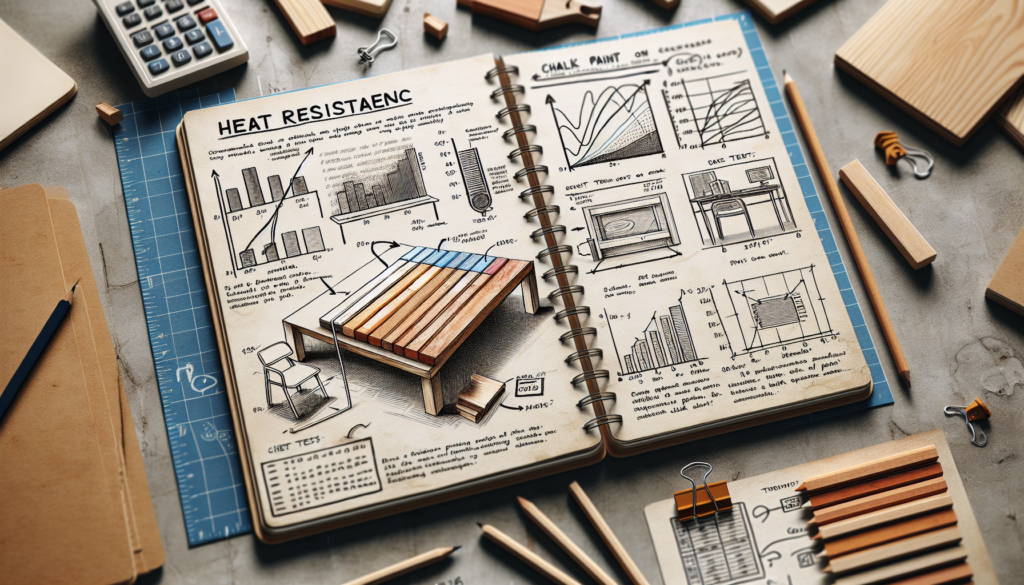
What is chalk paint?
Chalk paint is a type of paint that has gained popularity in recent years due to its versatility and unique properties. It is a decorative paint that can be used on various surfaces, including wood, metal, and even fabric. The term “chalk paint” refers to the distinctive matte, velvety finish that it creates, resembling the texture of a chalkboard. This type of paint is known for its ease of application and ability to adhere to almost any surface without the need for extensive preparation.
Composition of chalk paint
Chalk paint is typically made from a water-based formula, which includes a combination of minerals, pigments, and binders. The main component of chalk paint is calcium carbonate, also known as chalk, which gives the paint its characteristic matte finish and texture. Other ingredients may include water, acrylic or latex binders, and various fillers. The exact composition may vary between different brands and formulations, but the core ingredients remain similar.
Uses of chalk paint
Chalk paint offers a wide range of applications due to its versatility and unique qualities. It can be used for both indoor and outdoor projects and is suitable for various surfaces, including wood, glass, metal, and even fabric. Some common uses of chalk paint include furniture restoration, decorative finishes, wall painting, and even artwork. Its ability to adhere to different surfaces without extensive priming or sanding makes it a popular choice among DIY enthusiasts and professionals alike.
Advantages of using chalk paint
There are several advantages to using chalk paint, which contribute to its increasing popularity. Firstly, chalk paint requires minimal surface preparation, as it can adhere well to most surfaces, even ones with existing finishes or imperfections. This saves time and effort compared to other types of paint that may require extensive sanding or priming. Secondly, chalk paint offers a unique matte finish, which gives furniture and surfaces a vintage or rustic appearance. The velvety texture of the paint adds depth and character to any piece. Additionally, chalk paint is relatively easy to apply, even for beginners, and dries quickly. It also allows for easy distressing and layering, allowing for a customized and artistic look. Lastly, chalk paint is typically eco-friendly and low in volatile organic compounds (VOCs), making it a safe choice for both the environment and indoor use.
Understanding heat resistance
Definition of heat resistance
Heat resistance refers to the ability of a material, in this case, paint, to withstand and endure high temperatures without significant changes in its appearance or functionality. When paint is exposed to heat, it can undergo various transformations, such as discoloration, peeling, cracking, or even melting. Heat resistance is an important consideration for paints used in applications where the painted surfaces will be exposed to high temperatures, such as around fireplaces, stoves, or other heat sources.
Factors affecting heat resistance in paints
Several factors can influence the heat resistance of paints. One important factor is the type and quality of pigments used in the paint formulation. Certain pigments may have a higher affinity for heat, allowing them to remain stable and resist discoloration or other heat-related effects. The additives and binders present in the paint composition can also impact heat resistance. Some additives can enhance the paint’s ability to withstand high temperatures, while others might decrease heat resistance. Furthermore, the application and curing process can influence heat resistance. If the paint is not applied properly or allowed to cure adequately, its heat resistance may be compromised. Finally, the condition and preparation of the surface being painted can affect heat resistance. Properly prepared surfaces can provide better adhesion and durability, which can contribute to improved heat resistance.
Importance of heat resistance in paint
Heat resistance is an essential property to consider when choosing paint for applications where high temperatures are expected. Paint that cannot withstand heat may deteriorate, become discolored, or even release toxic fumes when exposed to elevated temperatures. Heat-resistant paint is especially crucial in areas such as kitchen countertops, fireplaces, radiators, or outdoor furniture that are likely to encounter high temperatures. By using heat-resistant paint, the longevity and appearance of painted surfaces can be preserved, ensuring their functionality and aesthetic appeal.
Is chalk paint heat resistant?
General heat resistance of chalk paint
Chalk paint is known for its decorative and protective qualities, but its heat resistance can vary depending on several factors. In general, chalk paint does have some level of heat resistance, which allows it to withstand moderate temperatures without significant damage. However, it is important to note that chalk paint may not be as heat resistant as other types of paints specifically formulated for high-temperature applications. While chalk paint can withstand everyday heat exposure, it may not be suitable for surfaces that are directly exposed to intense heat or flames.
Heat resistance of different brands of chalk paint
The heat resistance of chalk paint can vary between different brands and formulations. Some manufacturers may offer heat-resistant variants of chalk paint that can withstand higher temperatures compared to standard chalk paints. When choosing a brand of chalk paint, it is advisable to check the manufacturer’s specifications and recommendations regarding heat resistance. This information can help determine the suitability of the paint for specific applications, particularly those involving heat sources.
Testing and certification of heat resistance
Manufacturers of chalk paint often conduct testing to determine the heat resistance of their products. These tests involve exposing painted surfaces to controlled heat sources and monitoring the paint’s performance under elevated temperatures. The results of these tests can provide valuable information regarding the heat resistance of the paint. Additionally, some paints may carry certifications or labels indicating their heat resistance capabilities. When selecting chalk paint, it may be beneficial to look for such certifications or consult with the manufacturer for specific heat resistance information.
Factors influencing heat resistance of chalk paint
Type and quality of pigments
The type and quality of pigments used in chalk paint can play a significant role in its heat resistance. Some pigments, such as certain inorganic pigments or earth tones, have a higher tolerance for heat, allowing the paint to remain stable even under elevated temperatures. On the other hand, organic pigments or certain bright colors might be less heat resistant and more prone to discoloration or fading when exposed to heat.
Additives and binders used
Additives and binders used in the formulation of chalk paint can affect its heat resistance. Certain additives, such as flame retardants or heat-resistant agents, can enhance the paint’s ability to withstand high temperatures. These additives work by creating a protective barrier or by chemically reacting with heat to dissipate it, minimizing its impact on the paint. The selection of binders can also influence heat resistance, as different binders have varying temperature thresholds before they start to degrade or break down.
Application and curing process
The application and curing process of chalk paint can impact its heat resistance. Proper application, including thorough mixing and even coverage, ensures that the paint layer is uniform and adequately adheres to the surface. If the paint is not applied correctly, areas with thin coverage or uneven application may be more susceptible to heat-related damage. Curing the paint according to the manufacturer’s instructions is crucial for achieving optimum heat resistance. Insufficient curing period or exposure to heat before the paint fully cures can compromise its resistance to elevated temperatures.
Surface preparation
Surface preparation is a critical step in achieving good heat resistance with chalk paint. Properly preparing the surface, such as cleaning, sanding, and priming, promotes adhesion and helps create a solid foundation for the paint. A well-prepared surface ensures better heat resistance by preventing the formation of weak spots or areas prone to peeling, cracking, or discoloration. It is essential to follow the manufacturer’s recommendations for surface preparation to maximize the heat resistance of chalk paint.
Thickness of paint layer
The thickness of the paint layer can affect heat resistance. A thicker layer of chalk paint can provide better insulation and protection against heat compared to a thin layer. However, applying an excessively thick layer of paint may lead to problems such as cracking or poor adhesion. It is essential to find a balance and apply multiple thin coats of chalk paint to achieve the desired heat resistance while maintaining the paint’s integrity.
Exposure to direct heat sources
The heat resistance of chalk paint can be influenced by the level and duration of direct heat exposure. While chalk paint can withstand everyday heat exposure, placing it in direct contact with intense heat or flames can cause damage. It is important to consider the proximity of the painted surface to heat sources and take appropriate precautions to protect the paint. Using additional heat-resistant materials, such as heat-resistant tiles or protective barriers, can help shield chalk paint from extremely high temperatures.

Uses of heat-resistant chalk paint
Fireplace surrounds and mantels
Heat-resistant chalk paint is an excellent choice for fireplace surrounds and mantels, as these areas are subjected to high temperatures from the fireplace itself. By using heat-resistant chalk paint, the painted surfaces can maintain their appearance and integrity without being discolored, cracked, or peeled due to heat exposure. The matte finish of chalk paint can add a touch of elegance and sophistication to the fireplace area, creating a visually appealing focal point in the room.
Kitchen cabinets and countertops
In the kitchen, heat-resistant chalk paint can be used to revamp cabinets and countertops. These surfaces often come into contact with heat from cooking appliances, hot pots, or pans. By using chalk paint formulated to withstand high temperatures, such as those specifically designed for kitchen applications, the painted surfaces can withstand the heat without fading, warping, or other heat-related damage. Additionally, the wide range of colors available in chalk paint can allow for unique and personalized kitchen designs.
Outdoor furniture and accessories
Chalk paint can be used on outdoor furniture and accessories, such as tables, chairs, or planters, to create a weather-resistant and heat-resistant finish. Outdoor surfaces are exposed to a variety of weather conditions, including intense sunlight and fluctuations in temperature. Heat-resistant chalk paint can provide added protection against heat and UV rays, preventing the paint from fading or deteriorating due to exposure to the elements. This allows outdoor furniture and accessories to maintain their appearance and durability for an extended period.
Radiators and heating elements
Radiators and heating elements can benefit from the application of heat-resistant chalk paint. These surfaces can reach high temperatures when in use, making it crucial to choose a paint that can withstand the heat. Heat-resistant chalk paint can prevent discoloration, peeling, or other forms of damage caused by heat, ensuring a long-lasting and visually appealing finish. By using heat-resistant chalk paint, radiators and heating elements can blend seamlessly into the surrounding decor while maintaining their functionality.
Heat resistance of different paint finishes
Comparison of chalk paint with other finishes
When considering the heat resistance of chalk paint, it is important to compare it with other paint finishes commonly used. While chalk paint does offer some level of heat resistance, specific heat-resistant paints, such as enamel or ceramic-based paints, are designed specifically for high-temperature applications. These types of paints can withstand extreme heat without deteriorating or undergoing color changes. If heat resistance is a critical factor, it is advisable to choose paints specifically formulated for high-temperature settings.
Heat resistance of matte chalk paint
Matte chalk paint typically possesses a certain level of heat resistance due to its composition. The calcium carbonate present in the paint provides a degree of protection against heat-related effects. However, it is essential to note that the heat resistance of matte chalk paint may vary between different brands and formulations. Some manufacturers may offer heat-resistant variants of matte chalk paint, while others may not provide the same level of resistance. It is advisable to refer to the manufacturer’s specifications and recommendations regarding heat resistance before using matte chalk paint in applications involving heat sources.
Heat resistance of waxed chalk paint
Waxed chalk paint is a popular finishing technique that involves the application of a protective wax layer over the painted surface. While the waxed layer can provide some level of protection against heat, it is important to note that wax alone does not make the paint heat resistant. The heat resistance of waxed chalk paint relies primarily on the underlying chalk paint and its composition. The waxed layer can provide an additional barrier against heat, but it does not significantly enhance the heat resistance of the paint itself. Therefore, caution should be exercised when using waxed chalk paint in areas exposed to high temperatures.
Heat resistance of sealed chalk paint
Sealing chalk paint with an appropriate topcoat or sealer can enhance its heat resistance. Topcoats or sealers specifically formulated for heat resistance can provide an added layer of protection to chalk paint, allowing it to withstand higher temperatures without damage. These sealers can create a durable and heat-resistant barrier, protecting the painted surfaces from the harmful effects of heat exposure. When using sealed chalk paint, it is essential to choose a suitable topcoat or sealer and ensure that it is applied correctly for optimum heat resistance.

Measuring heat resistance
Standard testing methods
The heat resistance of paint can be measured using various standard testing methods. These methods involve subjecting painted samples to controlled heat sources and monitoring their performance under elevated temperatures. One commonly used test is the Hot Plate Test, where a sample of the painted surface is placed on a heated plate. The plate is gradually heated, and the temperature at which the paint starts to display signs of damage is recorded. This provides a measure of the paint’s heat resistance and its ability to withstand specific temperature thresholds.
Heat resistance rating scales
Heat resistance can be categorized using rating scales that indicate the paint’s ability to withstand different temperature ranges. These scales may differ between manufacturers or testing laboratories. The ratings provide a general guideline for consumers to compare the heat resistance of different paints and make informed choices based on their specific needs. Higher heat resistance ratings indicate paints that can withstand more prolonged exposure to higher temperatures without significant damage.
Reliability of heat resistance claims
It is important to note that while manufacturers often provide information on the heat resistance of their paints, the reliability of these claims can vary. Some manufacturers may conduct extensive testing and provide accurate heat resistance ratings, while others may rely on less rigorous testing or make generalized statements. To ensure the reliability of heat resistance claims, it is advisable to consult independent testing laboratories or seek certifications from accredited organizations. Additionally, reading reviews or seeking recommendations from professionals in the field can provide valuable insights into the actual performance of the paint in heat-resistant applications.
Tips for improving heat resistance of chalk paint
Proper surface preparation
Proper surface preparation is key to improving the heat resistance of chalk paint. Cleaning the surface and removing any dirt, grease, or previous finishes ensures better adhesion of the paint. Sanding the surface lightly helps create a textured surface for the paint to adhere to. Additionally, applying a suitable primer designed for heat resistance can further enhance the paint’s ability to withstand high temperatures.
Using heat-resistant primers
Using heat-resistant primers specifically formulated for the intended temperature range can significantly improve the heat resistance of chalk paint. Heat-resistant primers create a barrier between the surface and the paint, providing added protection against heat-related damage. These primers are designed to withstand elevated temperatures and help the paint maintain its integrity and appearance under high-temperature conditions.
Applying multiple thin coats
Applying multiple thin coats of chalk paint can improve its heat resistance. Thinner coats allow for better coverage and adhesion, resulting in a more solid and durable paint layer. By building up the paint layer gradually, the overall heat resistance can be enhanced, as thicker layers tend to provide better insulation and protection against heat. It is important to follow the manufacturer’s instructions regarding drying times between coats to ensure proper curing and heat resistance.
Avoiding exposure to direct heat sources
To preserve the heat resistance of chalk paint, it is important to avoid exposing painted surfaces to direct heat sources whenever possible. Placing hot pans or objects directly on painted surfaces can cause localized damage, such as discoloration or melting. Using trivets or heat-resistant pads can help protect the paint from contact with hot objects. Additionally, maintaining a safe distance between heat sources, such as stoves or fireplaces, and painted surfaces can minimize the risk of heat-related damage.
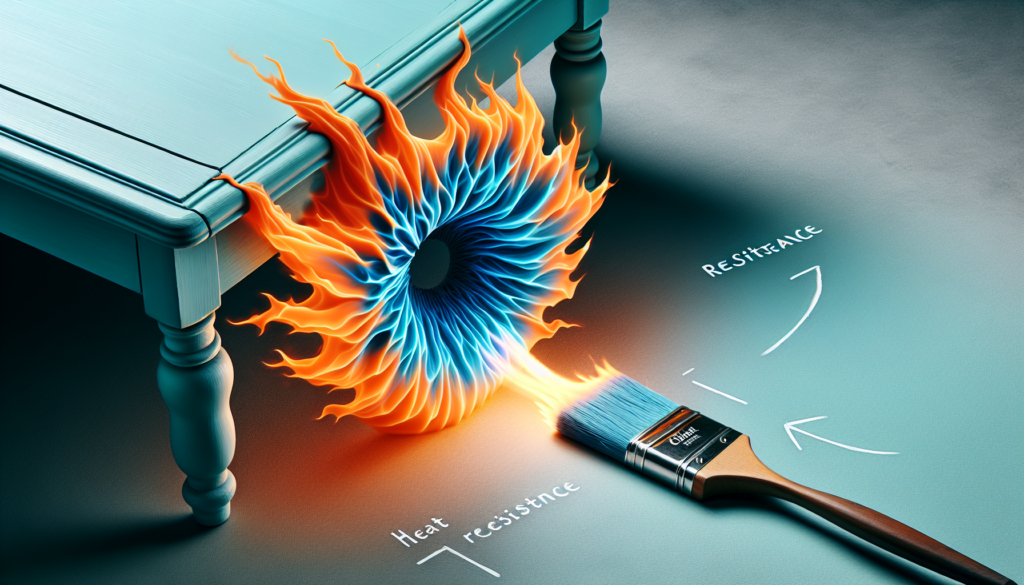
Common misconceptions about chalk paint and heat resistance
Assuming all chalk paint is heat resistant
One common misconception is assuming that all types of chalk paint are inherently heat resistant. While chalk paint does offer some level of heat resistance, not all chalk paints are formulated with high-temperature applications in mind. Different brands and types of chalk paint may have varying levels of heat resistance, depending on their composition and intended use. It is important to select a chalk paint that explicitly states its heat resistance capabilities or choose a paint specifically formulated for heat resistance.
Believing waxed chalk paint is heat resistant
Another misconception is believing that waxed chalk paint is heat resistant due to the added layer of wax. While wax can provide some level of protection against heat, it does not significantly enhance the heat resistance of the underlying chalk paint itself. Waxed chalk paint should be used with caution in areas exposed to high temperatures, as the wax layer may melt or become discolored when subjected to direct heat. For heat-resistant applications, it is advisable to use chalk paint formulated for high temperatures or consider sealing the paint with a suitable topcoat or sealer.
Misunderstanding heat-related effects on chalk paint
It is important to understand the potential effects of heat on chalk paint to avoid misunderstandings. Heat exposure can cause discoloration, fading, cracking, or other forms of damage to paint, including chalk paint. While chalk paint is generally more heat resistant than some other paint finishes, it is not impervious to the effects of heat. It is crucial to consider the specific heat resistance properties of the paint and select the appropriate type of paint for applications involving heat sources.
Conclusion
In conclusion, chalk paint offers a decorative and versatile option for various painting projects. While chalk paint does possess some degree of heat resistance, it is important to consider its limitations when used in high-temperature applications. The heat resistance of chalk paint can vary between different brands and formulations, and it may not be as heat resistant as paints specifically designed for high-temperature settings. Factors such as pigments, additives, application process, surface preparation, and direct heat exposure can influence the heat resistance of chalk paint. Using heat-resistant chalk paint in applications such as fireplace surrounds, kitchen cabinets, outdoor furniture, and radiators can help preserve the paint’s appearance and functionality. To ensure the best heat resistance performance, it is advisable to follow proper surface preparation, consider heat-resistant primers, apply multiple thin coats, and avoid direct heat exposure. By understanding the heat resistance capabilities of chalk paint and the specific requirements of each project, you can make informed decisions when choosing heat-resistant paint for your needs.
